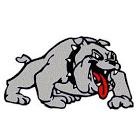Classifying Quadrilaterals Interactively
(View Complete Item Description)This group of activities, tasks, videos, and lessons allowed me to reinforce the classification of quadrilaterals. I used this lesson in my math intervention grouping of seventh graders that were struggling with Geometry shapes. There is a variety of ways to reinforce the skill while students were very engaged. The sites were really easy to share with the ease linking to Google Classroom.
Material Type: Activity/Lab




















